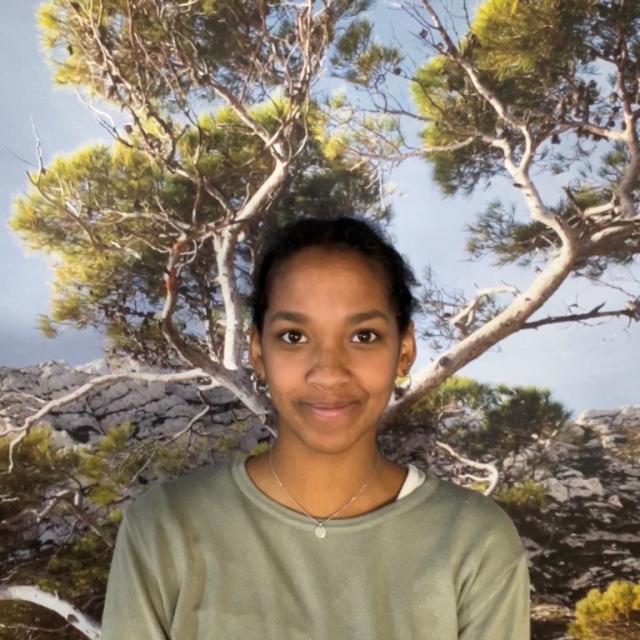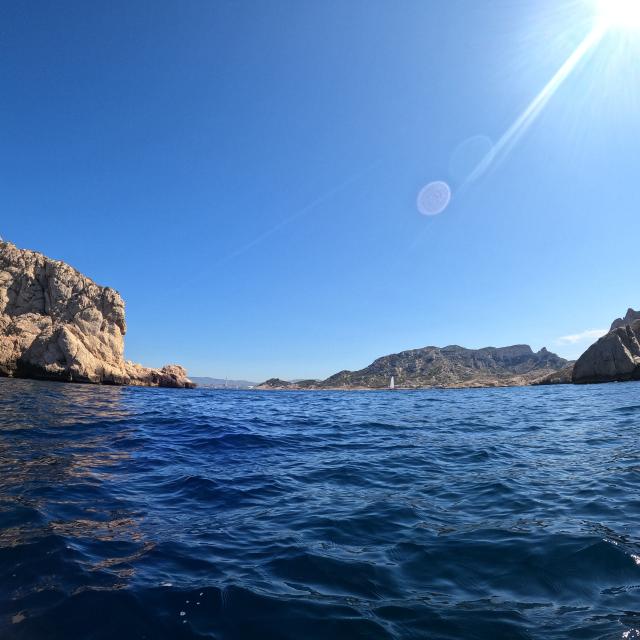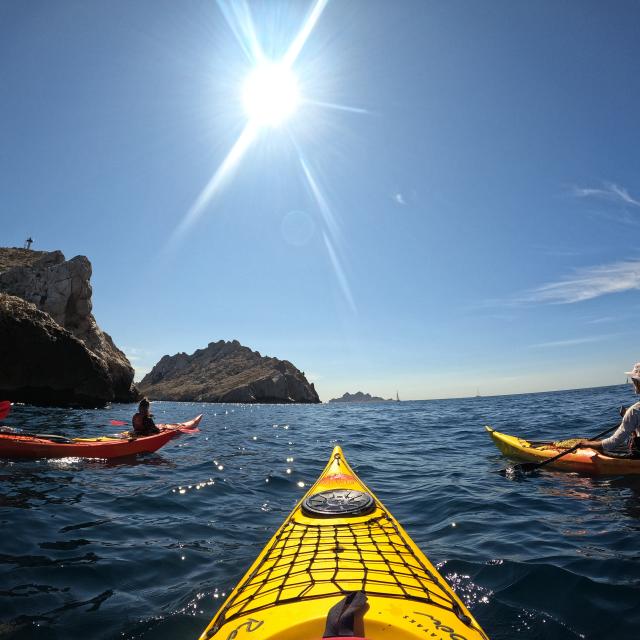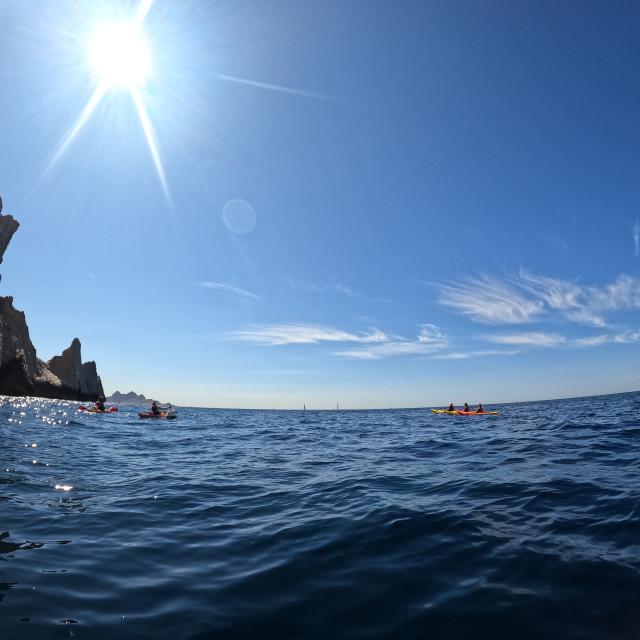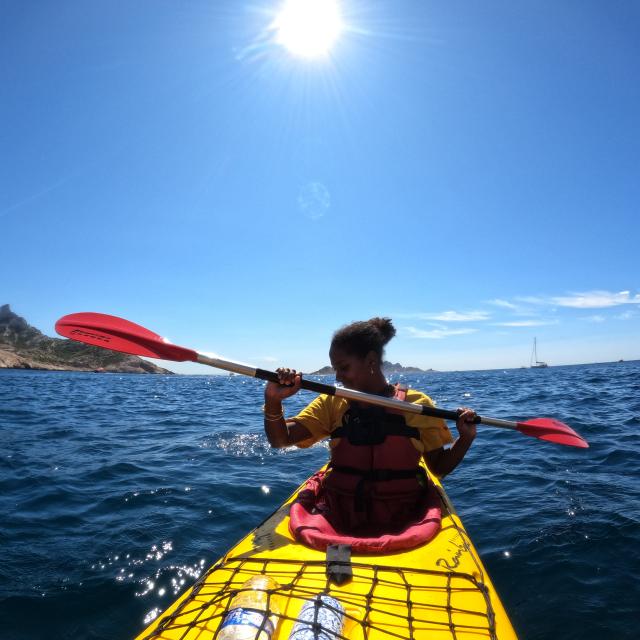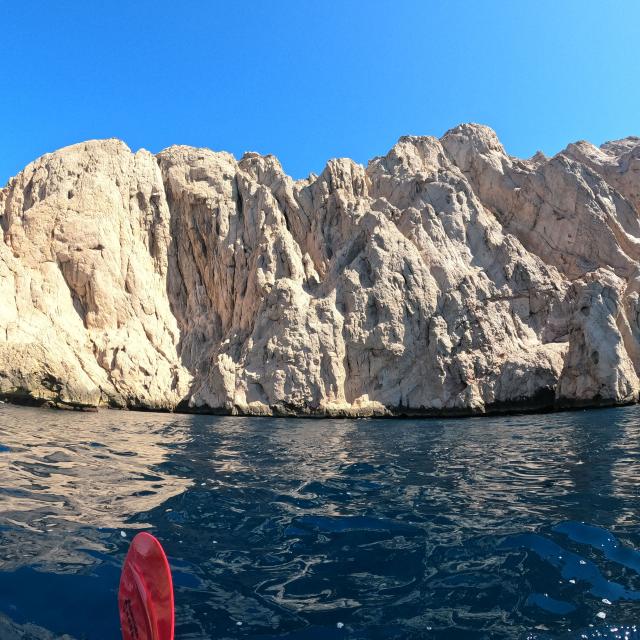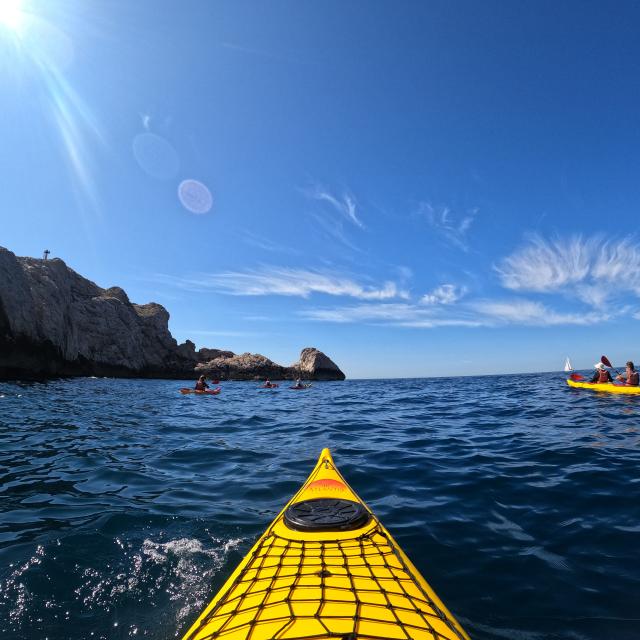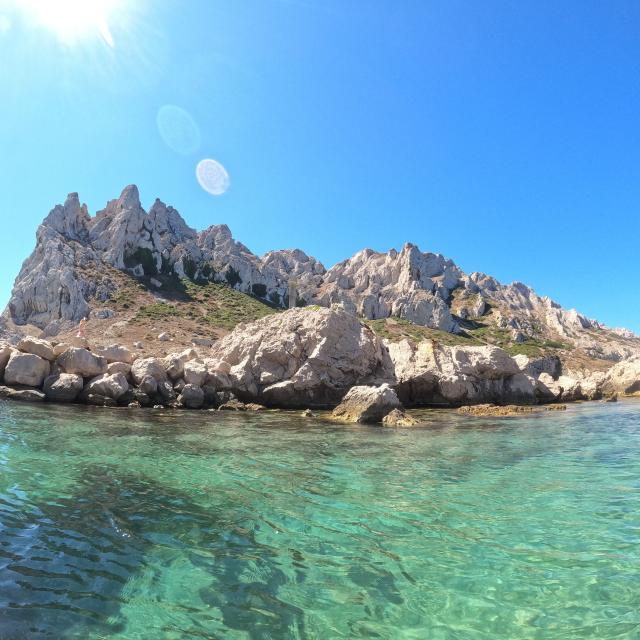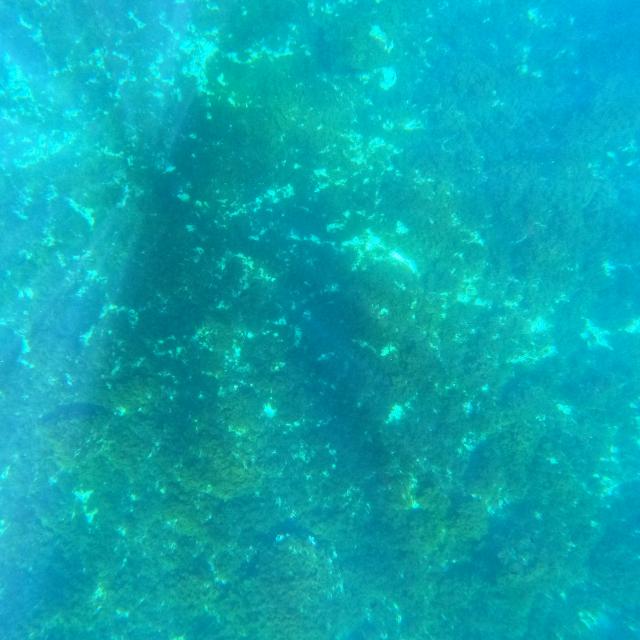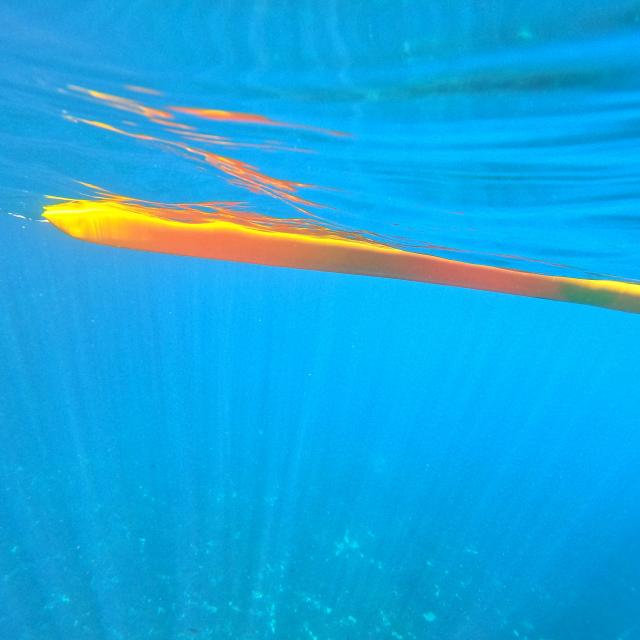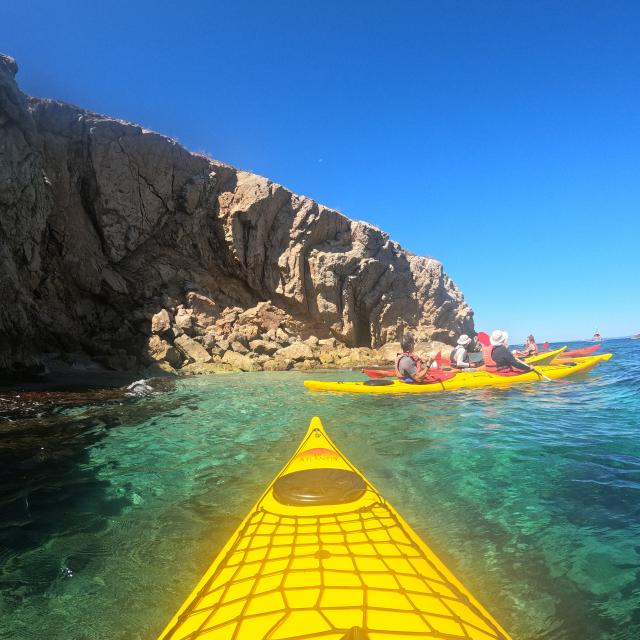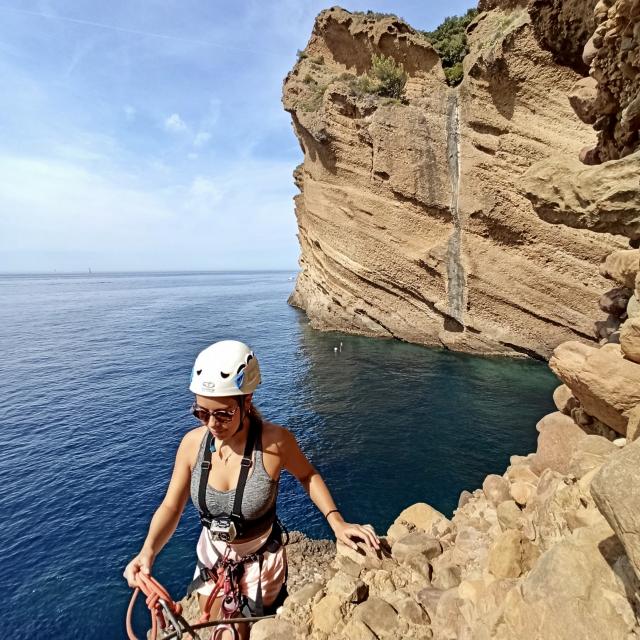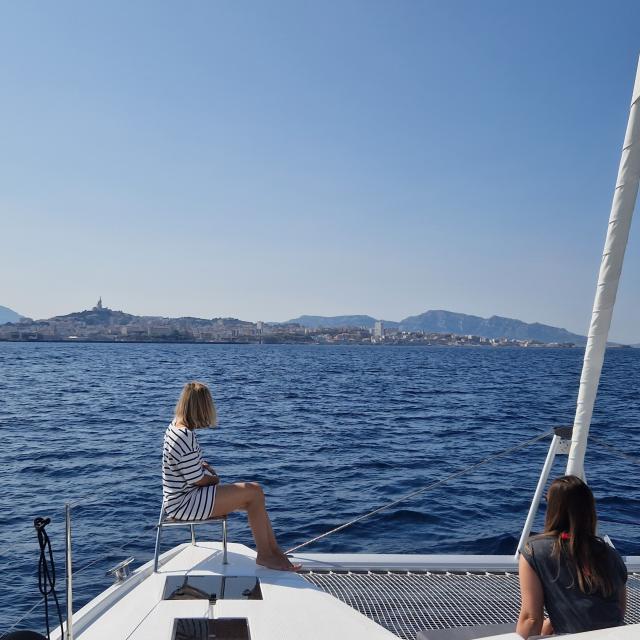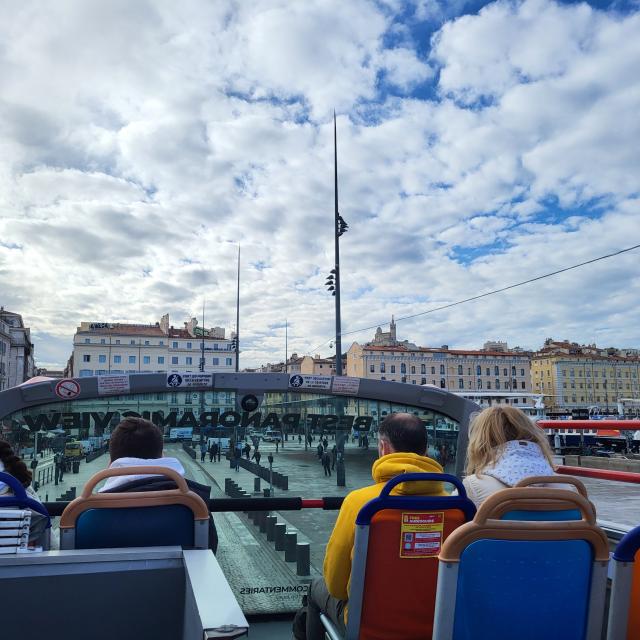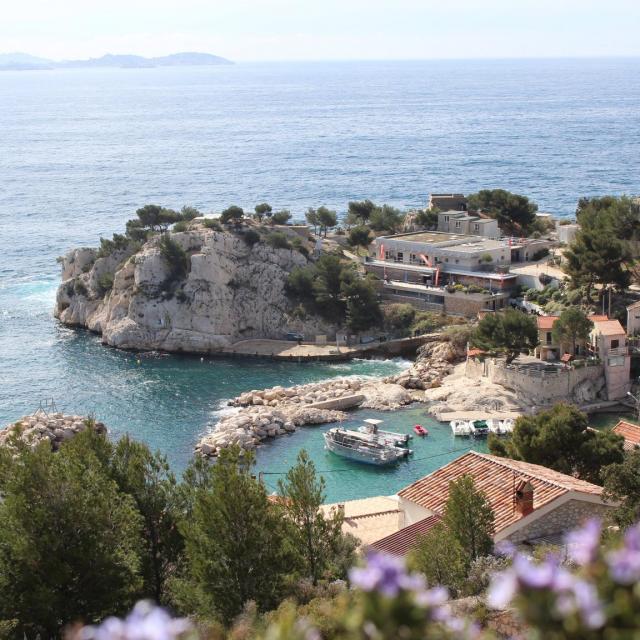Departure from Les Goudes
We’re lucky to have an early start, so we can enjoy the calm and beauty of Les Goudes in the early hours of the morning.
Our guides, Romuald and Alexis, present us with our boats for the morning and we take them down to the beach with them, accompanied by the other kayakers for the day. The advantage of this type of activity is that you get to meet people from all walks of life.
On the Maronnaise beach, we all stand in a circle, paddles in hand, and Romuald explains a few basics before we get into the water. It’s obviously very important to wear a lifejacket, as we’re going out into the open sea. They also provide us with a skirt to prevent water from entering the kayak. Once we had all the information we needed, we could get into the water.
After a little manoeuvre to get into the kayak safely, we settled into the kayak in pairs with Aurore.
And off we go, synchronised in our movements towards the open sea. Right, left, right, left… We found our balance and sailed towardsthe islands of the national park. We’re already spotting some animal species…
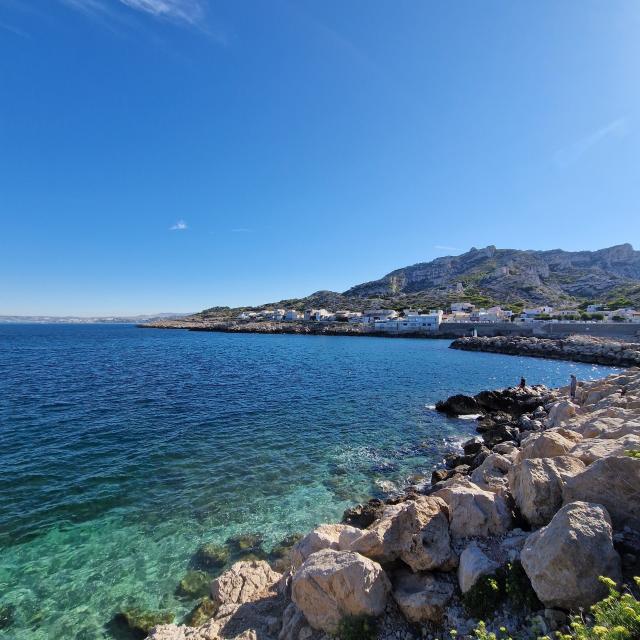 Les Goudes Alotlcmotlcm Rotated
Les Goudes Alotlcmotlcm Rotated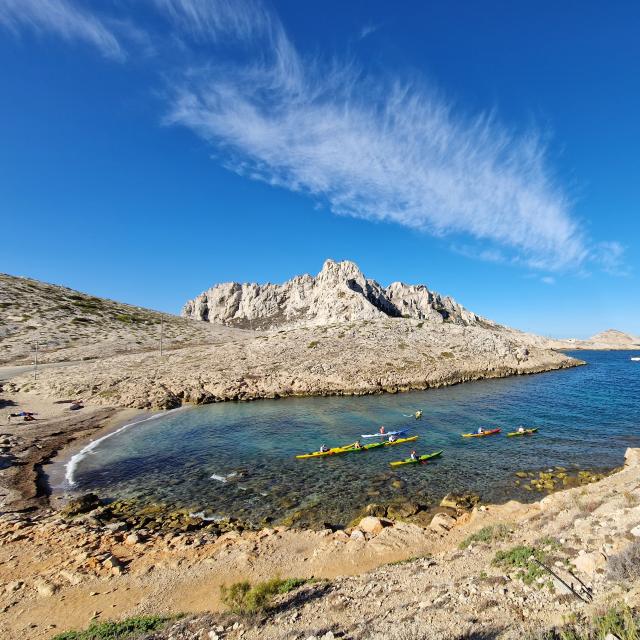 Kayak De Mer Anse De La Maronaise Alotlcm 5
Kayak De Mer Anse De La Maronaise Alotlcm 5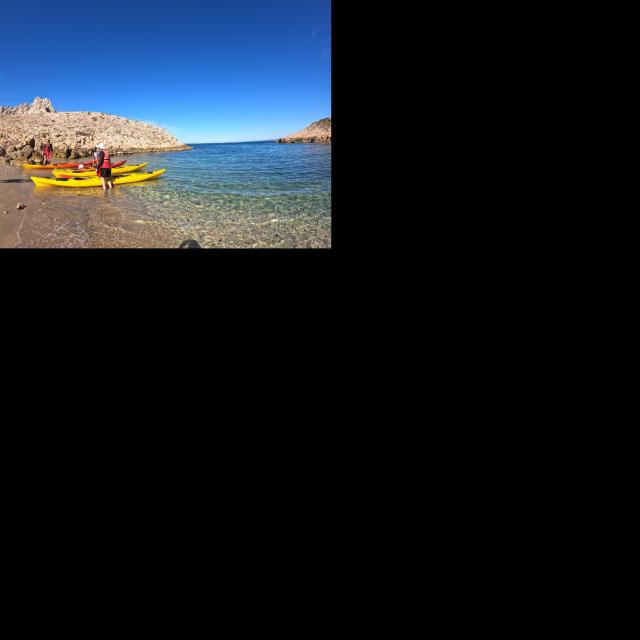 DCIM100GOPROGOPR0035.JPG
DCIM100GOPROGOPR0035.JPG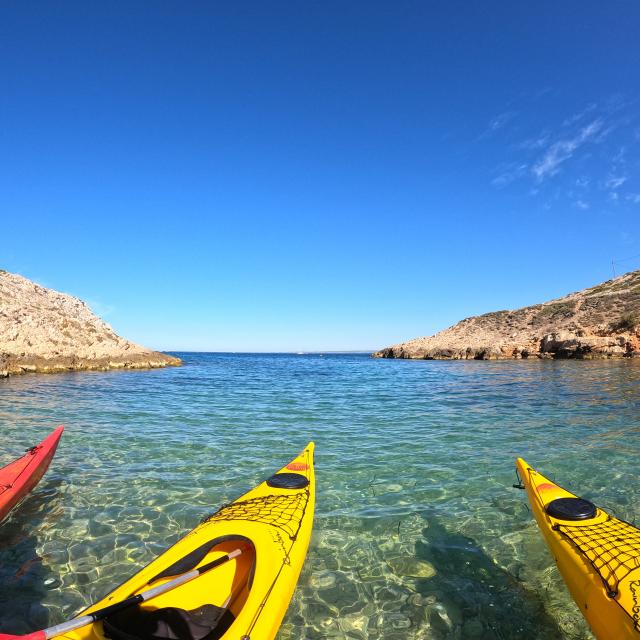 DCIM100GOPROGOPR0037.JPG
DCIM100GOPROGOPR0037.JPG